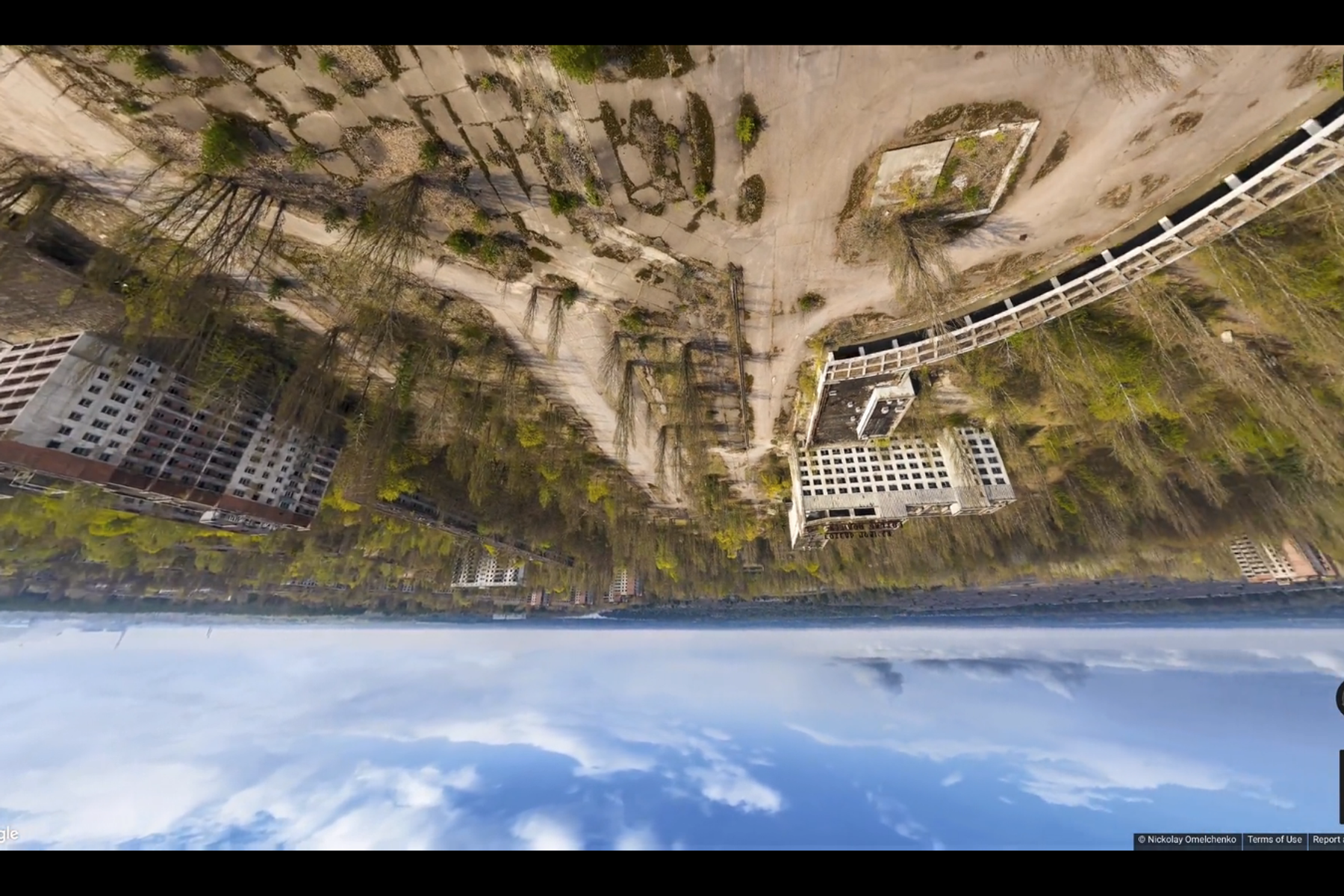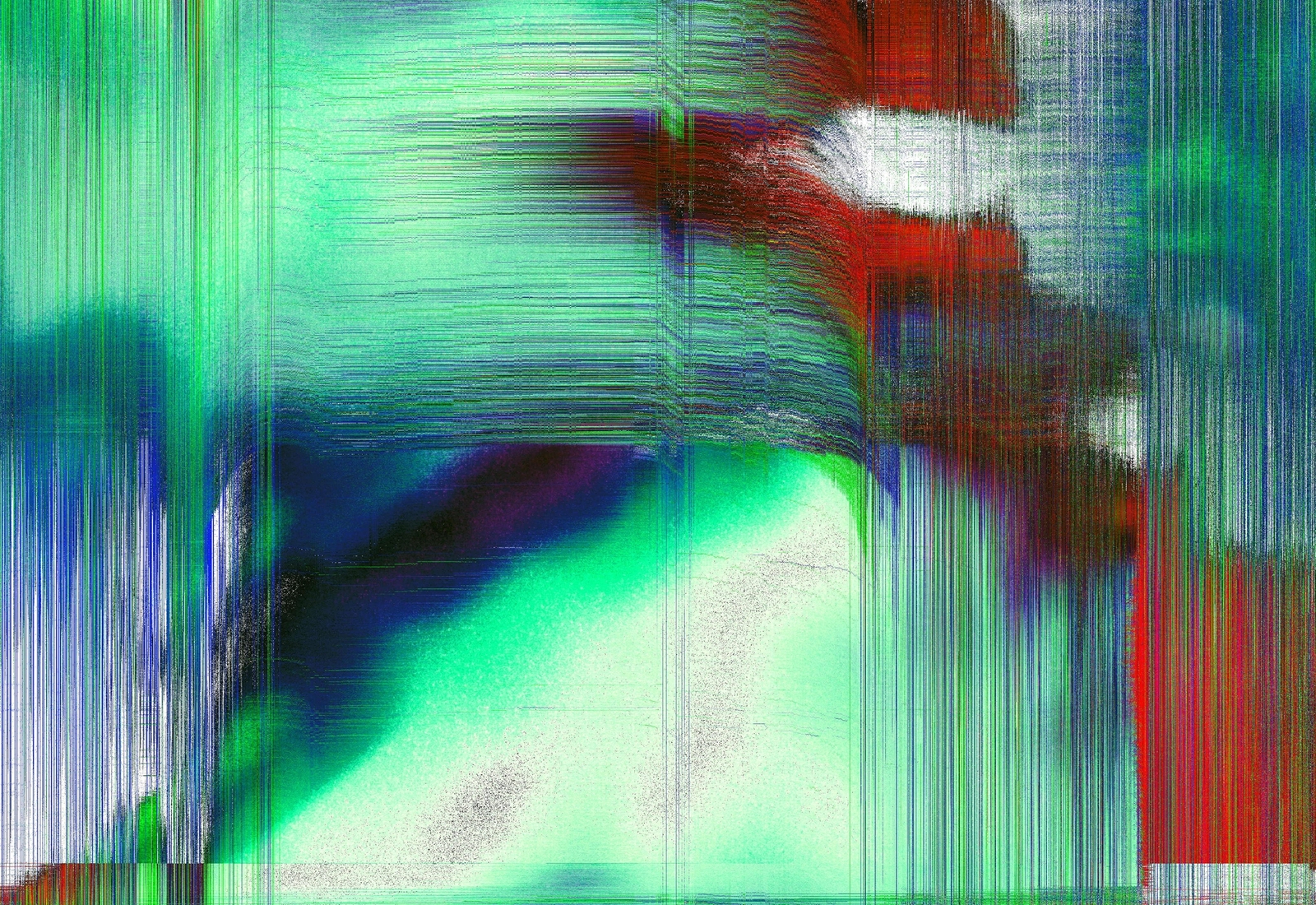James Hoff in conversation with Perwana Nazif
Salon de Normandy was organized by The Community and powered by Novembre.global, as a free-to-visit and free-to-exhibit-by-invitation initiative at Hotel de Normandy in Paris, held between October 17 and 20, 2019. The salon is a gathering of an international community of galleries, exhibition spaces, projects, collectives, publishers, and labels inside the 150 years old hotel.
Included in PAN’s screening series for multidisciplinary salon, Salon de Normandy, at the historic Hôtel Normandy in Paris, was conceptual artist James Hoff’s HOBO UFO (v. Chernobyl). The video work consists of what looks like a Google Street View of Pripyat, the site of the infamous nuclear power plant accident known as the Chernobyl disaster. The images and movement of images of the city, much of which is in an exclusion zone due to high levels of dangerous radioactive contamination, is controlled by sound in Hoff’s video, upending the typical relationship we see with sound as submitting to image. In our chat below, the artist delves more into the generative quality to glitches and parasites (not unlike the historical context of HOBO UFO (v. Chernobyl)) in his practice, his press Primary Information, and the technologies—along with their histories—used in his works.
Let’s begin with the title of your work that was screened at Hôtel Normandy, HOBO UFO (v. Chernobyl). It seems to indicate to some sort of dichotomy or antagonistic relationship, can you tell me more about the title and maybe your specific reasoning for creating a work on Chernobyl and Pripyat?
The title comes from an old conference call line for phreakers set up by Kevin Mitnick in the early 80s in California. I thought it made for a nice metaphor for the work but also for our own experience of traversing through the disembodied space of Street View via our phones and computers.
The Chernobyl version came about for very specific reasons. The HOBO UFO project was created as a live project… I would play and the Street View location would be located in the city I was playing (typically starting at the club or venue). This would take the viewer through their own streets in a manner dictated solely by the audio I was creating. The first performance was in 2016 at the ICA in London. Since it is a site-specific work, it was hard to conceive of how to release it on PAN. In 2017, I decided to locate the project somewhere that most people know but have not visited, to invert the site-specificity aspect of the live performance. Chernobyl seemed like the perfect place in that regard, since it occupies a place in our cultural memory but for the most part is off limits for most people.
There also seems to be a narrative arc with the audio in the piece in relation to the visual content although not necessarily with the latter. What is the sonic element’s relationship to the rest of the work and, if it does provide this narrative, what is it?
The sound completely controls the images and the movement of the work. The soundtrack, like much sound design in cinema, manipulates our experience, emotions, and impressions of the moving image, but unlike traditional cinema, HOBO UFO provides an experience in which sound manipulates and controls the image and the camera movement as well. The sound is comprised of granular synthesis of GPS/FM radio signals I gathered in Pripyat as well as traditional instruments: Oboe, French Horn, Double Bass, and Flute.

This piece was initially commissioned by UNSOUND in 2017 and I created a work that was very different than the one that you see/hear now. I spent a great deal of time on Street View traversing Pripyat and Chernobyl during that time and in 2018 I decided to pay a visit to see if I could have a different experience. In a way, that visit was anti-climactic, I didn’t see much in real life that I hadn’t seen online, but in another way it was radically different. The solitude, the nature, the sadness, and the feeling of devastation were there (the emotional-experiential aspect of visiting a place) and quite profound. This inspired me to scrap the original work and start over, creating a version that could respond to that emotional experience and transform the work beyond a conceptual-rational study. This meant creating narrative arcs and movements, but I don’t want to explain beyond that. I think experiencing the work is more important than understanding my view of how or why the narrative unfolds in the way that it does.

Each site we are taken to via Google’s Street View is shown via a rapid, dizzying 360 degree aspect and panned up and down. Can you speak more to the camera movements and transitions—as well as the specific sites in Pripyat chosen to explore via Google’s Street View—in the piece?
I worked with a programmer named Rueben Son to modify Google’s API so that it would aggregate any sound or groups of sound and cause the perspective to shift. This could be applied to any of the controllable parameters on Street View (horizontal and vertical movement, panning, zoom, etc). Through the sound/music, I was then able to create a cinematic experience and create narrative arcs, in the traditional sense. The sites were not chosen by me as much as they were chosen by the music and the images that are already built into the API. A lot of the images, come from tourists who have visited the site in the last few years. It was important for me to tell a story with the technology and information that is already there.

Much of your practice, whether it be painting or sound, deals with thematic notions of parasite, biology, and history and warfare such as Blaster which is described as “infecting” 808 beats with a computer virus and How Wheeling Feels When the Ground Walks Away, a sonic landscape of found recordings of riots and “sounds of modern warfare”. Chernobyl’s site as a former site of a nuclear disaster is quite in line with these themes you explore in your larger practice. We see, in regards to form, these experimental influences in your curation of your Artist Book press, Primary Information with books by or on John Cage and George Kuchar. What would you say, if there are any, are the distinctions between the various mediums you work with (including the curation of Primary Information)?
A lot of my work is dealing with breakdowns, glitches, and malfunctions as generative sources and this crosses all the mediums I work in. Recently I’ve been dealing with technological glitches more specifically. A great deal of the technology we use in art and music is appropriated from military technology. For example, the vocoder, stereo panning, and cassette tape (to name just a few) all have roots in war. The same can be said of corporate technology, which often piggybacks on military technologies and infrastructure. Artists have by design, or necessity, figured out how to misuse, or break, this technology to creative ends. In some ways, I think it is the duty of an artist to do this. If we have to live with Street View for instance, why not at least use it creatively to create a different experience, one with less maleficent ends.

Primary Information is something I do see as a bit separate in a way. It is an organization that seeks to serve artists and others, by publishing historical out-of-print material at an affordable price point. It allows for greater access to particular histories. As an editor, Primary Information allows me a great deal of time to research and explore various histories. I didn’t go to art school (I studied political theory and economics) so most of my education came through artists books, working with artists directly and working at art organizations. Primary Information is a way of sharing that knowledge and creating opportunities for people to learn outside of expensive institutions or cultural capitals like New York.

Your practice also strikes me as playing with scale via exploration of the biological and then larger socio-political-historical events that could be reduced to something quite similar, especially through the process of infection or parasite. Would you agree with this or see the common themes in your works as exclusive to one another?
I would definitely agree to this. One can always find outliers and I don’t consider all of my work successful. When it is successful, in my opinion, is when it can connect a quotidian experience or phenomenon with larger social or political concerns through the production of an aesthetic experience, whether it’s music, painting, or video, etc. My interest in the parasite is focused primarily on those that are passed through communication and reside in communication networks. Computer viruses, syndromes, and ear worms are all byproducts of economic, political, geographic and social systems. Isolating them and using them as building blocks for a new experience is part of the process for me. The hope is that it allows for a new experience while pointing to the socio-political conditions by which such parasites were produced and function. For me art is basically a contrast dye, like iodine of fluorescein.



